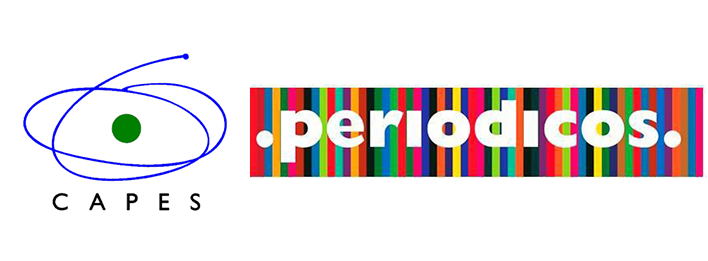O JOGADOR BRASILEIRO DE LEAGUE OF LEGENDS
PERFIL E MOTIVAÇÃO DE JOGAR
Palavras-chave:
League of Legends, Motivação para Jogar, PLS-SEMResumo
O objetivo deste artigo é identificar o perfil do jogador brasileiro de League of Legends por meio do entendimento das motivações que o levam a jogar. A indústria de videogames é um mercado em crescimento com potencial para fornecer percepções de interesse para o campo de pesquisa do consumidor. League of Legends é um jogo MOBA desenvolvido pela Riot Games em 2009 e teve mais de 100 jogadores mensais em 2016. Usamos uma abordagem quantitativa para atingir o objetivo da pesquisa. A Digital Games Motivation Scale (DGMS) foi aplicada em uma pesquisa com 240 jogadores. O PLS-SEM foi utilizado para identificar como essa motivação afeta o comportamento dos jogadores. Descobrimos que passatempo, desempenho, hábito e agência são os motivos mais importantes para os jogadores e a motivação tem um impacto maior quando se trata do número de horas que o jogador passa no jogo diariamente, do número de partidas que joga diariamente, do interesse em comprar itens do jogo com dinheiro real e o número de partidas que jogam diariamente. Por fim, são apresentadas as limitações do estudo e sugestões para pesquisas futuras.
Referências
Events By the Numbers. (2019, January 02). Retrieved March/April, 2019, from https://nexus.leagueoflegends.com/en-us/2018/12/2018-events-by-the-numbers/
Arafat, M., Qusef, A., & Al-Taher, S. (2019, April). Steam’s Early Access Model: A Study on Consumers’ Perspective. In 2019 IEEE Jordan International Joint Conference on Electrical Engineering and Information Technology (JEEIT) (pp. 336-341). IEEE.
Bányai, F., Griffiths, M. D., Király, O., & Demetrovics, Z. (2019). The psychology of esports: A systematic literature review. Journal of gambling studies, 35(2), 351-365.
Choi, C. (2019). Understanding media consumption of electronic sports through spectator motivation, using three different segmentation approaches: the levels of addiction, passion, and fan identification. Sport Mont, 17(1), 3-8.
Connolly, T. M., Boyle, E. A., MacArthur, E., Hainey, T., & Boyle, J. M. (2012). A systematic literature review of empirical evidence on computer games and serious games. Computers & education, 59(2), 661-686.
Connolly, T. M., Boyle, E. A., MacArthur, E., Hainey, T., & Boyle, J. M. (2012). A systematic literature review of empirical evidence on computer games and serious games. Computers & education, 59(2), 661-686.
Costa, F. D. (2011). Mensuração e desenvolvimento de escalas: aplicações em administração. Rio de Janeiro: Ciência Moderna.
Cotter, K. (2019). Playing the visibility game: How digital influencers and algorithms negotiate influence on Instagram. New Media & Society, 21(4), 895-913.
Cottrell, C., McMillen, N., & Harris, B. S. (2019). Sport psychology in a virtual world: Considerations for practitioners working in eSports. Journal of Sport Psychology in Action, 10(2), 73-81.
De Grove, F., Cauberghe, V., & Van Looy, J. (2016). Development and validation of an instrument for measuring individual motives for playing digital games. Media Psychology, 19(1), 101-125.
Demetrovics, Z., Urbán, R., Nagygyörgy, K., Farkas, J., Zilahy, D., Mervó, B., Harmath, E. (2011). Why do you play? The development of the motives for online gaming questionnaire (MOGQ). Behavior Research Methods, 43(3), 814-825.
F. Hair Jr, J., Sarstedt, M., Hopkins, L., & G. Kuppelwieser, V. (2014). Partial least squares structural equation modeling (PLS-SEM) An emerging tool in business research. European Business Review, 26(2), 106-121.
Feng, J., Spence, I., & Pratt, J. (2007). Playing an action video game reduces gender differences in spatial cognition. Psychological science, 18(10), 850-855.
Geiler, A. (2016). eSports. Zeitschrift für Herz-, Thorax-und Gefäßchirurgie, 30(3), 213-216.
Greenberg, B. S., Sherry, J., Lachlan, K., Lucas, K., & Holmstrom, A. (2010). Orientations to video games among gender and age groups. Simulation & Gaming, 41(2), 238-259.
Griffiths, M. (2017). The psychosocial impact of professional gambling, professional video gaming & eSports. Casino & Gaming International, 28, 59-63
Griffiths, M. D. (2017). The psychosocial impact of professional gambling, professional video gaming & eSports. Casino & Gaming International, 28, 59-63.
Guo, H., Hao, L., Mukhopadhyay, T., Sun, D. (2014, December 17-19) Pricing strategies of in-game virtual currency completed research paper. In 24th Annual Workshop on Information Technologies and Systems: Value Creation from Innovative Technologies.
Gusmão, P., Almeida, T., Lopes, F., Muryn, Y., Martins, J., & Au-Yong-Oliveira, M. (2019, April). Microtransactions in the Company’s and the Player’s Perspective: A Manual and Automatic Analysis. In World Conference on Information Systems and Technologies (pp. 440-451). Springer, Cham.
Hair Jr, J. F., Hult, G. T. M., Ringle, C., & Sarstedt, M. (2016). A primer on partial least squares structural equation modeling (PLS-SEM). Sage publications.
Lee, J.-Y., An, J.-W., & Lee, S.-W. (2014). Factors affecting eSports audience satisfaction-The case of League of Legends. Journal of Korea Game Society, 14(3), 35-46.
Lowry, P. B., & Gaskin, J. (2014). Partial least squares (PLS) structural equation modeling (SEM) for building and testing behavioral causal theory: When to choose it and how to use it. IEEE transactions on professional communication, 57(2), 123-146.
Man, G. (2019). 7 maneiras de voltar ao jogo como Jungler no League of Legends. Escola do LOL: transformando aprendizes em Mestres. Uol. Available in: <https://www.escoladolol.org/2019/01/7-maneiras-de-voltar-ao-jogo-como.html>. Access in: 20 aug. 2019.
Macedo, T., & do Corral Vieira, M. (2018, April). Dinâmicas de consumo de bens virtuais: práticas e valores no universo de League of Legends. In E-Compós (Vol. 21, No. 1).
Molesworth, M., & Knott, J. D. (Eds.). (2013). Digital virtual consumption. Routledge.
Mora-Cantallops, M., & Sicilia, M. A. (2018). MOBA games: A literature review. Entertainment Computing, 26, 128-138.
N. (2018, April 30). Global Games Market Revenues 2018: Per Region & Segment. Retrieved April/May, 2019, from https://newzoo.com/insights/articles/global-games-market-reaches-137-9-billion-in-2018-mobile-games-take-half/
Paravizo, E., & de Souza, R. R. L. (2018, August). Playing for Real: An Exploratory Analysis of Professional Esports Athletes’ Work. In Congress of the International Ergonomics Association (pp. 507-515). Springer, Cham.
Qian, T. Y., Wang, J. J., Zhang, J. J., & Lu, L. Z. (2019). It is in the game: dimensions of esports online spectator motivation and development of a scale. European Sport Management Quarterly, 1-22.
Ratan, R. A., Taylor, N., Hogan, J., Kennedy, T., & Williams, D. (2015). Stand by your man: An examination of gender disparity in League of Legends. Games and Culture, 10(5), 438-462.
Reza, A., Chu, S., Khan, Z., Nedd, A., Castillo, A., & Gardner, D. (2019, March). Skins for Sale: Linking Player Identity, Representation, and Purchasing Practices. In International Conference on Information (pp. 124-131). Springer, Cham.
Ringle, C. M., Da Silva, D., & Bido, D. D. S. (2014). Modelagem de equações estruturais com utilização do SmartPLS. Revista Brasileira de Marketing, 13(2), 56-73.
Setterstrom, A. J., & Pearson, J. M. (2019). Social Influence and Willingness to Pay for Massively Multiplayer Online Games: An Empirical Examination of Social Identity Theory. Communications of the Association for Information Systems, 44(1), 2.
Sherry, J. L., Lucas, K., Greenberg, B. S., & Lachlan, K. (2006). Video game uses and gratifications as predictors of use and game preference. In P. Vorderer, & J. Bryant (Eds.), Playing video games: Motives, responses, and consequences (pp. 213-224). Mahwah, NJ: Lawrence Erlbaum Associates.
Shieber, J. (2019, January 22). Video game revenue tops $43 billion in 2018, an 18% jump from 2017. Retrieved April/May, 2019, from https://techcrunch.com/2019/01/22/video-game-revenue-tops-43-billion-in-2018-an-18-jump-from-2017/
Vorderer, P. (2000). Interactive entertainment and beyond. In D. Zillman, & P. Vorderer (Eds.), Media entertainment: The psychology of its appeal (pp. 21-36). Mahwah, NJ: Lawrence Erlbaum Associates.
Vorderer, P., Hartmann, T., & Klimmt, C. (2003, May). Explaining the enjoyment of playing video games: the role of competition. Paper presented at the Proceedings of the Second International Conference on Entertainment Computing, Pittsburgh, Pennsylvania, USA
Xia, B., Wang, H., & Zhou, R. (2019). What Contributes to Success in MOBA Games? An Empirical Study of Defense of the Ancients 2. Games and Culture, 14(5), 498-522.
Yee, N. (2006a). The demographics, motivations, and derived experiences of users of massively multi-user online graphical environments. Presence: Teleoperators and Virtual Environments, 15(3), 309-329.
Yee, N. (2006b). Motivations for play in online games. CyberPsychology & Behavior, 9(6), 772-775.
Downloads
Publicado
Como Citar
Edição
Seção
Licença
Copyright (c) 2022 Lucas Emmanuel Nascimento Silva, Patrick Wendell Lessa, Rebeca da Rocha Grangeiro

Este trabalho está licenciado sob uma licença Creative Commons Attribution 4.0 International License.
Autores que publicam nesta revista concordam com os seguintes termos:
- Autores mantém os direitos autorais e concedem à revista, sem ônus para a mesma, o direito de primeira publicação, com o trabalho simultaneamente licenciado sob a Licença Creative Commons Attribution que permite o compartilhamento do trabalho com reconhecimento da autoria e publicação inicial nesta revista
- Autores têm autorização para assumir contratos adicionais separadamente, para distribuição não-exclusiva da versão do trabalho publicada nesta revista (ex.: publicar em repositório institucional ou como capítulo de livro), com reconhecimento de autoria e publicação inicial nesta revista.
- Autores assumem exclusiva responsabilidade pelas suas opiniões emitidas nos trabalhos publicados nesta revista
















